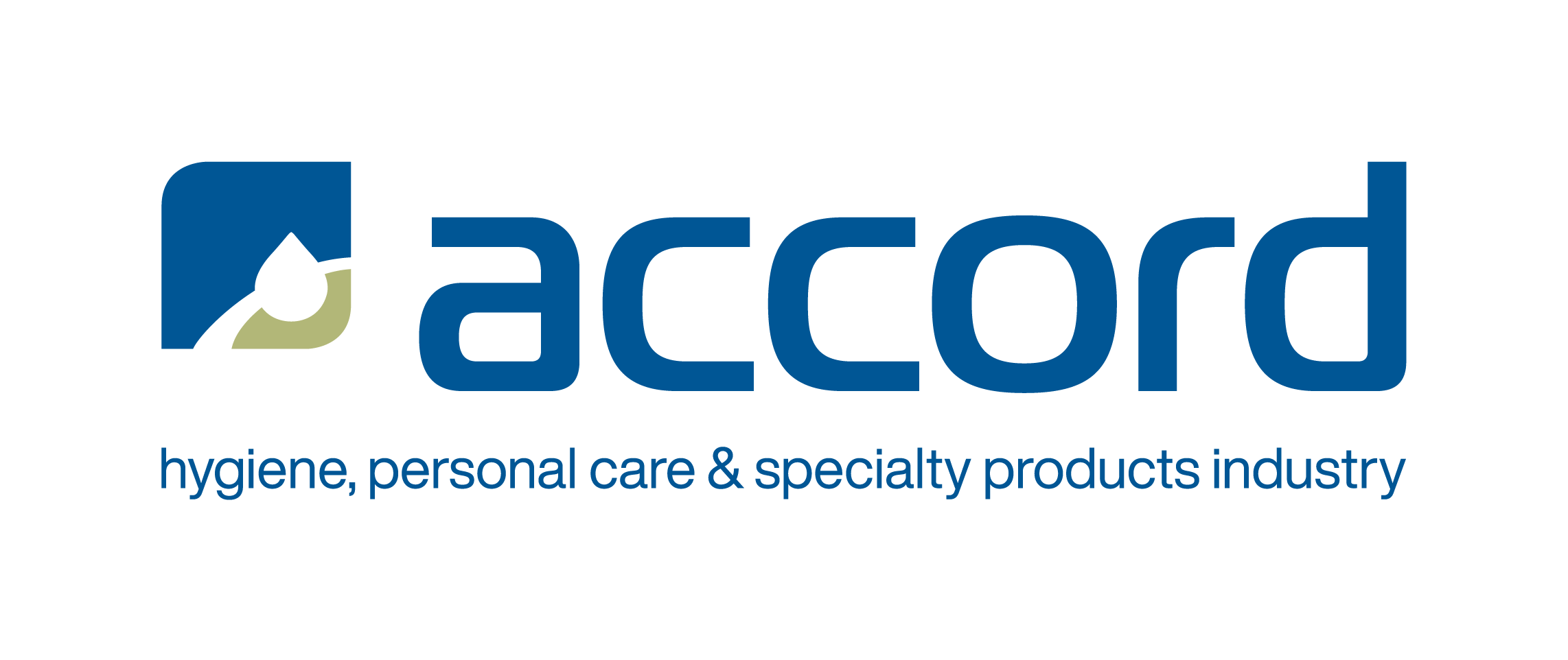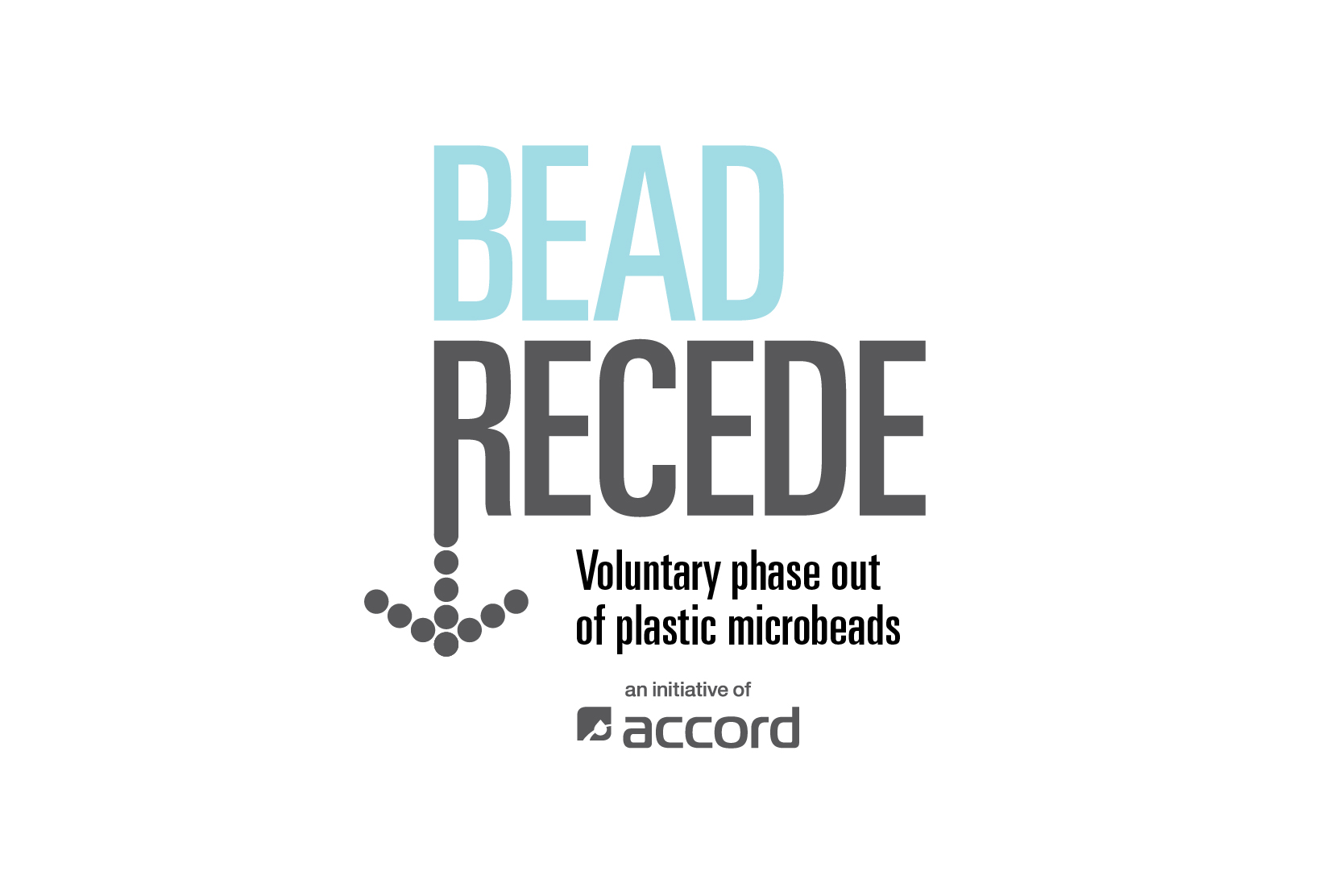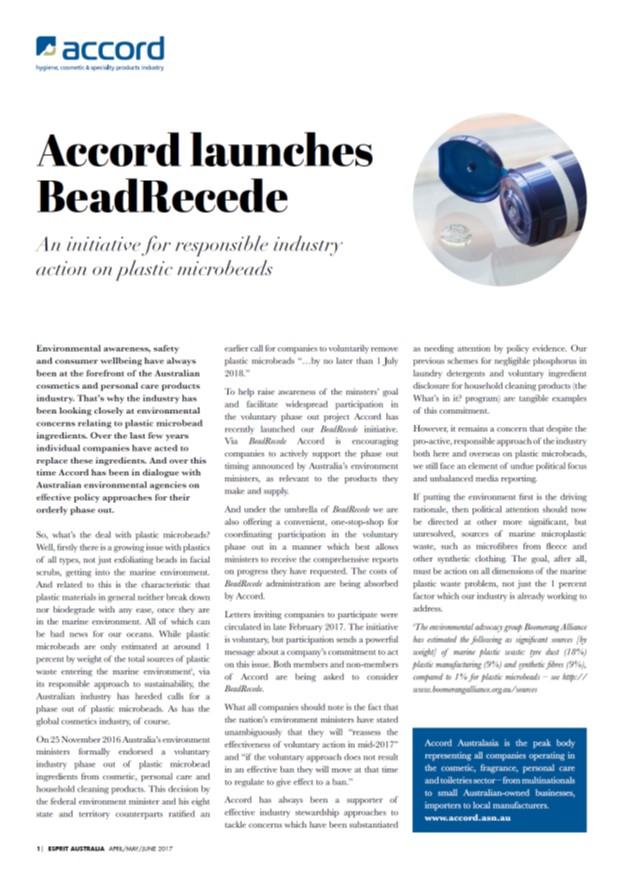Archive
Previous updates:
At their meeting on 7 December 2018, Australia’s environment ministers noted in their official communique the successful ‘phasing out of almost all microbeads from cosmetic and personal care products’.
To support the ongoing success of the phase-out, in late December 2018 the Commonwealth issued Accord with a monitoring and assurance protocol outlining expectations for the next stages of the BeadRecede campaign (also available on the federal Department’s website from www.environment.gov.au/protection/waste-resource-recovery/plastics-and-packaging/plastic-microbeads). Accord has agreed to maintain a range of actions to support the success of the phase-out, as outlined in this protocol, until June 2022.
BeadRecede campaign outreach will continue in 2019 and beyond and Accord will be reminding manufacturers and retailers of continued expectations for microbead-free products as per the scope of the phase-out. In accordance with the protocol, Accord will also provide reports to the Federal Department, as outlined.
Responses to BeadRecede outreach in February 2017 demonstrated that more than 50 per cent of relevant companies have already completed their phase-out of solid plastic microbeads. Pleasingly it also revealed that 93 per cent of relevant companies are on board with meeting the phase-out, having either already removed solid plastic microbeads or committing to doing so in accordance with the ministers’ timeframe of no later than mid-2018.
The initial baseline report was considered by the MEM* at their meeting on 28 July 2017, with the MEM expressing satisfaction with the progress so far: “Ministers welcomed industry progress to deliver a voluntary phase-out of microbeads by mid-2018”.
The initial baseline report identified that broader industry outreach was needed in Australia for companies using solid plastic microbeads beyond their conventional usage, such as in heavy-duty hand soaps. Accord commenced this outreach in September 2017.
Also, worth noting are the scientific reports showing plastic microbeads to be less significant environmentally than some other microplastics, such as synthetic clothing microfibres. Accord believes it is time for environmental policy attention to shift gears and give similar attention to the other sources of marine plastic pollution. For more information, see the microplastic litter infographic.
*The Meeting of Environment Ministers (MEM) includes the Federal Environment Minister and the environment ministers from each state and territory government.


